Hello gardeners! We hope your winter planning season went well. (you have been planning your spring garden, haven’t you?) More now than ever, it is important for you to be food independent, and as a result we’ll have a bumper supply of seedlings available. Please call for availability though as weather during the next few weeks may affect the supply. IMPORTANT NOTICE! Every Saturday, starting April 31, 10am-2pm, I will be set up at Roscoes, 94 Green River Rd, Zirconia. Click HERE for a map.
All seedlings below will be available for $2.00/4-pack. 12 4-packs per flat (48 plants): $20.00
Kale
Until the end of the Middle Ages, kale was one of the most common green vegetables in all of Europe. Curly leafed varieties of cabbage already existed along with flat leafed varieties in Greece in the fourth century BC. These forms, which were referred to by the Romans as Sabellian kale, are considered to be the ancestors of modern kales. Today one may differentiate between varieties according to the low, intermediate, or high length of the stem, with varying leaf types.
Blue Knight
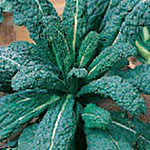 Vigorous Scotch-type kale, deep blue-green, firm curly leaves that hold up well when cut, very uniform and high-yielding cultivar. Adaptation: wide; suitable for spring or fall plantings; very slow to bolt, making it useful for a winter crop in southern states. Days to maturity: 55
Vigorous Scotch-type kale, deep blue-green, firm curly leaves that hold up well when cut, very uniform and high-yielding cultivar. Adaptation: wide; suitable for spring or fall plantings; very slow to bolt, making it useful for a winter crop in southern states. Days to maturity: 55
Dynasaur Kale

This kale has very attractive, wrinkled (but not frilled) dark blueish-green (almost black) leaves that have a smooth edge. Leaves can get quite large, anywhere up to 24 inches (60 cm), but are best eaten at a small stage, about 8 inches (20 cm) or less. Excellent taste; not bitter, becomes sweeter after a frost. Often considered the best tasting Kale available. Very hardy. Very old heirloom variety, probably originated in Italy.Plant in full sun, 18 – 24″ between plants. Days to maturity: 50
Red Russian
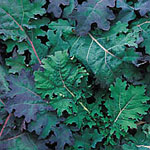 Red russian is part of the Mustard genus and is a Cabbage variety. Its scientific name is Brassica oleracea (Capitata Group) ‘Red russian’. This variety is an Vegetable that typically grows as an Annual, which is defined as a plant that matures and completes its lifecycle over the course of a single year. Red russian is known for growing to a height of approximately 30.0 cm (11.7 inches). Red russian Cabbage is great for inexperienced gardeners and those that like low maintanance gardens. Days to maturity: 40
Red russian is part of the Mustard genus and is a Cabbage variety. Its scientific name is Brassica oleracea (Capitata Group) ‘Red russian’. This variety is an Vegetable that typically grows as an Annual, which is defined as a plant that matures and completes its lifecycle over the course of a single year. Red russian is known for growing to a height of approximately 30.0 cm (11.7 inches). Red russian Cabbage is great for inexperienced gardeners and those that like low maintanance gardens. Days to maturity: 40
Portuguese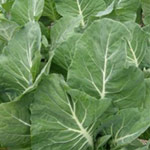
Tender, sweet and more heat tolerant than other kale varieties. It has huge, paddle-shaped, blue-green leaves with thick, white ribs and grows 1-2′ tall and wide. A robust grower, it is perfect for raw salads and is a cinch to clean, unlike some of the ruffled kale varieties. It is also productive enough to harvest in quantity for soups and raw salads. Days to maturity: 60
Pak Choi – Joi Choi
 Pak Choi is part of the Mustard genus and is a Chinese cabbage variety. Its scientific name is Brassica rapa (Chinensis Group) ‘Pak Choi’. This variety is an Vegetable that typically grows as an Annual, which is defined as a plant that matures and completes its lifecycle over the course of a single year. Normally grows to a mature height of 25.0 cm (9.75 inches). China is believed to be where Pak Choi originates from. Pak Choi Chinese cabbage is normally quite a low maintenance plant and is normally very easy to grow – great for beginner gardeners!
Pak Choi is part of the Mustard genus and is a Chinese cabbage variety. Its scientific name is Brassica rapa (Chinensis Group) ‘Pak Choi’. This variety is an Vegetable that typically grows as an Annual, which is defined as a plant that matures and completes its lifecycle over the course of a single year. Normally grows to a mature height of 25.0 cm (9.75 inches). China is believed to be where Pak Choi originates from. Pak Choi Chinese cabbage is normally quite a low maintenance plant and is normally very easy to grow – great for beginner gardeners!
Try to plant in a location that enjoys full sun and remember to water often. Keep in mind when planting that Pak Choi is thought of as tender, so it is imperative to wait until temperatures are mild before planting out of doors. Pak Choi needs a loamy soil with a ph of 6.1 to 7.8 (weakly acidic soil to weakly alkaline soil).
Ensure that temperatures are mild and all chance of frost has passed before planting out, as Pak Choi is a tender plant. Days to maturity: 50
Tatsoi
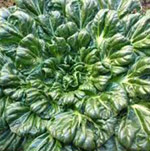
Tatsoi (Brassica narinosa or Brassica rapa var. rosularis), also called spinach mustard, spoon mustard, or rosette bok choy, is an Asian variety of Brassica rapa grown for greens. This plant has become popular in North American cuisine as well, and is now grown throughout the world. The plant has dark green spoon-shaped leaves which form a thick rosette. It has a soft creamy texture and has a subtle yet distinctive flavor. It can be grown to harvestable size in 45–50 days, and can withstand temperatures down to –10°C (15°F). Tatsoi can be harvested even from under the snow. Days to maturity: 45
Spinach
Tyee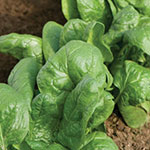
Standard savoy spinach.Known for its bolt resistance and vigorous growth. Dark green leaves with upright growth habit. Suitable for spring, summer, and fall crops. Ideal for overwintering. Days to maturity: 50
Swiss Chard
Bright Lights
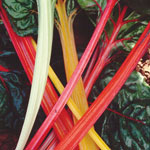 Bright Lights is part of the Beet genus and is a Chard variety. Its scientific name is Beta vulgaris var. cicla ‘Bright Lights’. It is considered a heirloom OP (open polliated) cultivar. These 18″-22″ leaves in a wide assortment of bright colors pink, red, gold, orange white and mauve use the small leaves just like spinach! Stir fry the large leaves with garlic and chicken. Remember to blanch the bigger leaves in a pot of boiling water with one tablespoon of salt for 5-10 minutes then drain. This virtually eliminates any of the bitter flavors you sometimes get in older leaves. Young leaves we use fresh in salads or veggie wraps!
Bright Lights is part of the Beet genus and is a Chard variety. Its scientific name is Beta vulgaris var. cicla ‘Bright Lights’. It is considered a heirloom OP (open polliated) cultivar. These 18″-22″ leaves in a wide assortment of bright colors pink, red, gold, orange white and mauve use the small leaves just like spinach! Stir fry the large leaves with garlic and chicken. Remember to blanch the bigger leaves in a pot of boiling water with one tablespoon of salt for 5-10 minutes then drain. This virtually eliminates any of the bitter flavors you sometimes get in older leaves. Young leaves we use fresh in salads or veggie wraps!
Plant in a location that enjoys full sun and remember to water moderately. Keep in mind when planting that Bright Lights is thought of as very hardy, so this plant will survive though longer winters with little or no damage. Bright Lights requires a soil ph of 6.1 – 7.5 meaning it does best in weakly acidic soil – weakly alkaline soil. Days to maturity: 50
